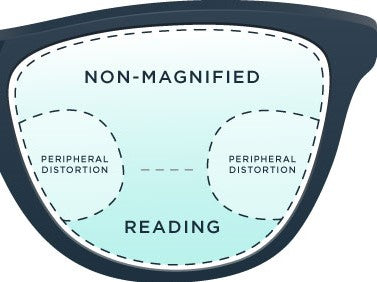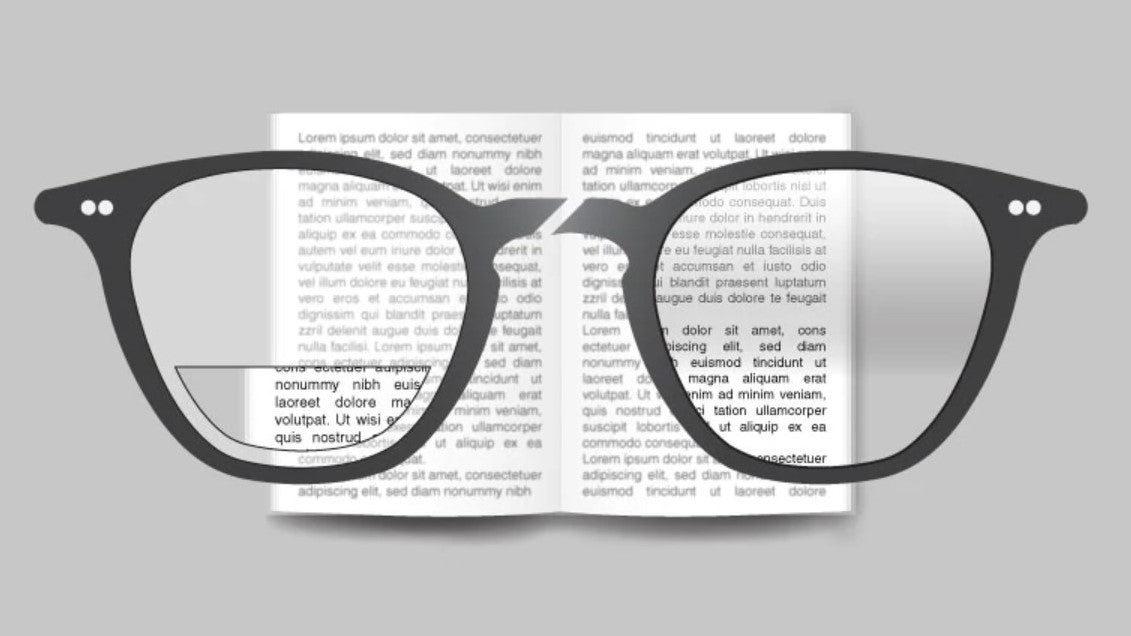When the world turns into a blurry blob, and you can’t read the words on a page in front of you, it’s time to take a trip to the optometrist for some new glasses. There are two predominant types of glasses for the farsighted person: reading glasses and bifocals. But what’s the difference, and how can you tell which type is for you? The difference between reading glasses and bifocal readers is the structure of the lenses. Reading glasses have a single vision lens that is strictly designed for near vision, whereas bifocal lenses comprise different strengths for both near and distance vision.
What Are Bifocal Lenses?
If you need to see both up-close and far away, bifocal readers will be a good option to help you see clearly at any distance. Bifocal reading glasses feature distance vision correction at the top half of the lens and near vision correction at the bottom so they are perfect if you need help with both. Bifocal lenses work by providing two different prescriptions in one lens. If you look closely at this type of lens you‘ll see a line across the center and this is where the two different prescriptions meet. Since we tend to look down when reading a book or looking at our phones, the bottom half of the lens is designed to help with reading.
Differences Between Bifocal Readers And Reading Glasses
Reading glasses are commonly used by individuals with presbyopia. Since the lenses in reading glasses are single vision, they are comprised of one unified strength throughout the entire lens. Additionally, single vision lenses on reading glasses tend to be convex in shape. In addition to its single vision, this shape in the lens allows near objects to appear clearer to the user. The lens’s power will vary by individual and depends on the degree of visual aid they require. Typically, low-power reading glasses will fall into the range of +1.25 to +1.5. Although your lens’s power might start at +1.25, it is typical for vision to degenerate with age and you will likely need to upgrade to more powerful lenses.
Despite their similarities in purpose, bifocal readers differ significantly from reading glasses, particularly in structure. As opposed to the single vision lenses of reading glasses, bifocal lenses comprise different strengths that allow them to be more versatile and appropriate for wearing over extended periods. Each bifocal lens is actually comprised of two different lenses with separate powers. The majority of the lens is clear and free of magnification to allow the user to see objects in the distance without issue. The second lens is a small, crescent shape towards the bottom of the lens that allows the reading to switch from distance perception to near perception.
8 Signs You Need Reading Glasses or Bifocal Readers
- Frequent headaches when reading.
- Daily eye fatigue.
- Regular eye strain that is uncomfortable, painful, or debilitating.
- Constantly moving objects away from you to increase vision and readability.
- Vision and focus changes throughout the day (near objects are clear in the morning but blurry by the end of the day).
- The blurriness of near objects and clarity of distanced objects.
- Often need bright lights to see or read properly.
- Frequently losing your place when reading and/or using finger guides.
When you notice you are experiencing difficulties with your vision, it’s best to seek help. If you are experiencing many of these 8 signs on a day-to-day basis, or you notice some occur much more frequently than normal, consider taking a simple eye test and then consulting an eye-care professional for additional help.
As for the differences between bifocal readers and reading glasses, this post from Koalaeye Optical has shown some signs you need reading glasses or bifocal readers. If you have any different ideas for bifocal lenses and reading glasses, share them in the comment zone. If you have any problems with glasses or sunglasses, please feel free to contact us via email at service@koalaeye.com and we will reply to you as soon as possible.





































